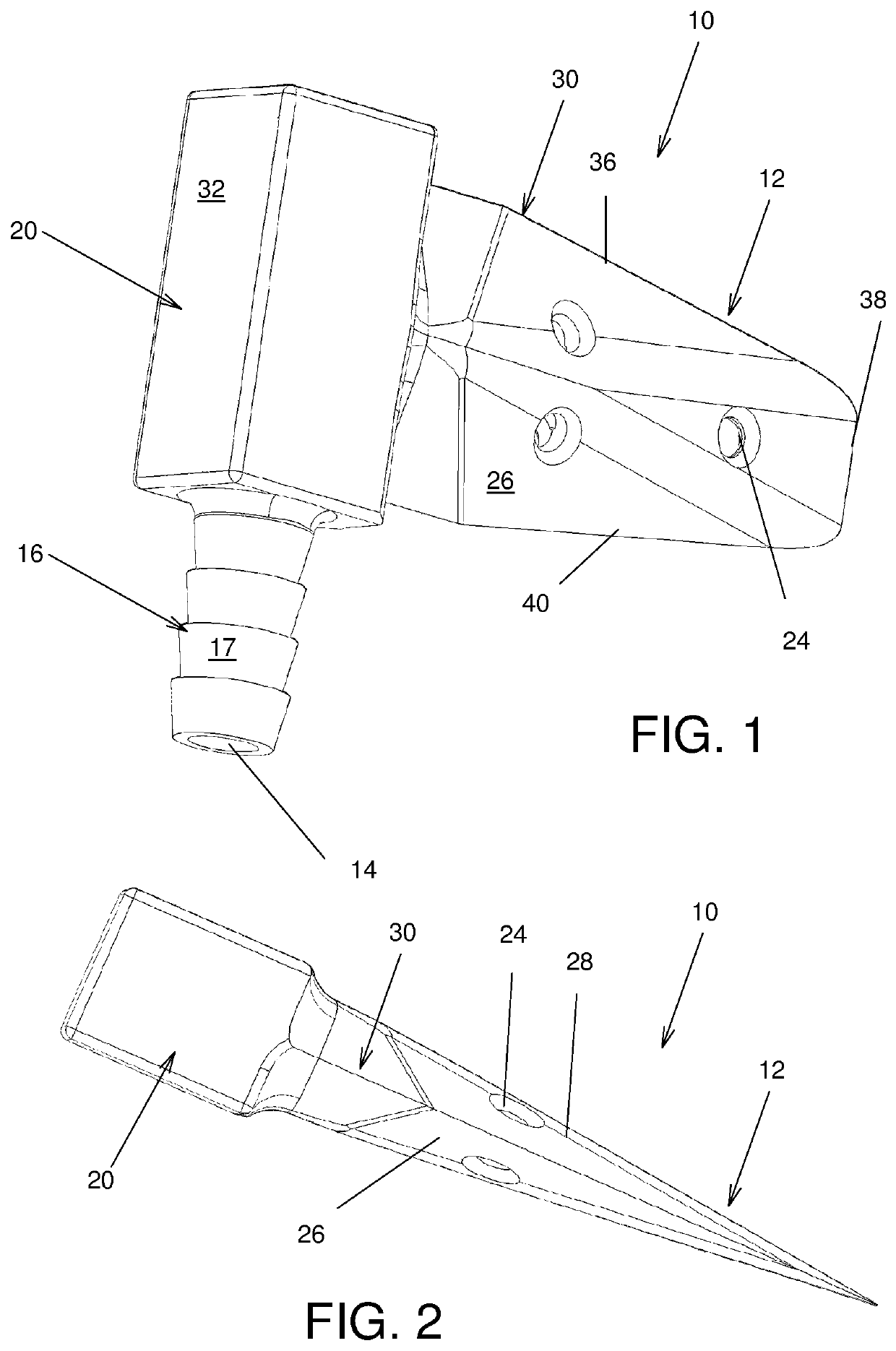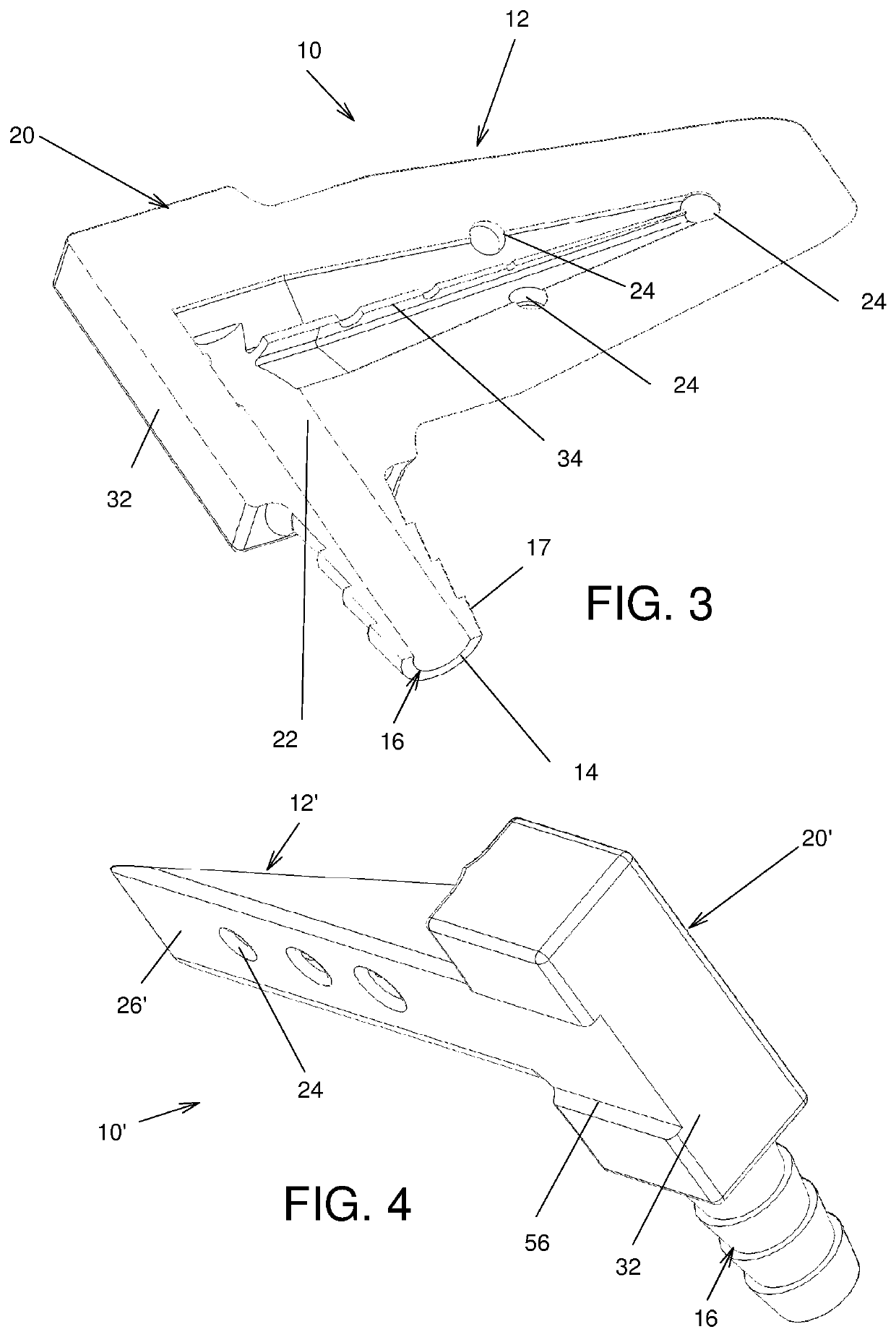Tree tap and method of using same
a tree sap and tap technology, applied in the field of tree sap collection, can solve the problems of affecting the useful life of the tree, and it takes many years for the tree to repair damage, so as to reduce the injury to the tree, increase the useful life of the tree, and reduce the damage to the tree
- Summary
- Abstract
- Description
- Claims
- Application Information
AI Technical Summary
Benefits of technology
Problems solved by technology
Method used
Image
Examples
example
[0100]4 to 5 feet long maple tree trunk segments were collected in the winter and brought at room temperature upstanding with their bottom portion in water. Trunks were tapped using conventional taps and with the tree tap 10a with and without drilling the cavity 62. Sap was collected using negative pressure provided by commercial equipment with all cases. Initially, all samples provided sap at similar rates. However, then the cavity 62 was absent, a gradual reduction in the sap flow was observed in the tree taps 10a over a period of a few days. This reduction was not observed with the tree tap 10a with the cavity 62a present.
PUM
 Login to View More
Login to View More Abstract
Description
Claims
Application Information
 Login to View More
Login to View More - R&D
- Intellectual Property
- Life Sciences
- Materials
- Tech Scout
- Unparalleled Data Quality
- Higher Quality Content
- 60% Fewer Hallucinations
Browse by: Latest US Patents, China's latest patents, Technical Efficacy Thesaurus, Application Domain, Technology Topic, Popular Technical Reports.
© 2025 PatSnap. All rights reserved.Legal|Privacy policy|Modern Slavery Act Transparency Statement|Sitemap|About US| Contact US: help@patsnap.com



